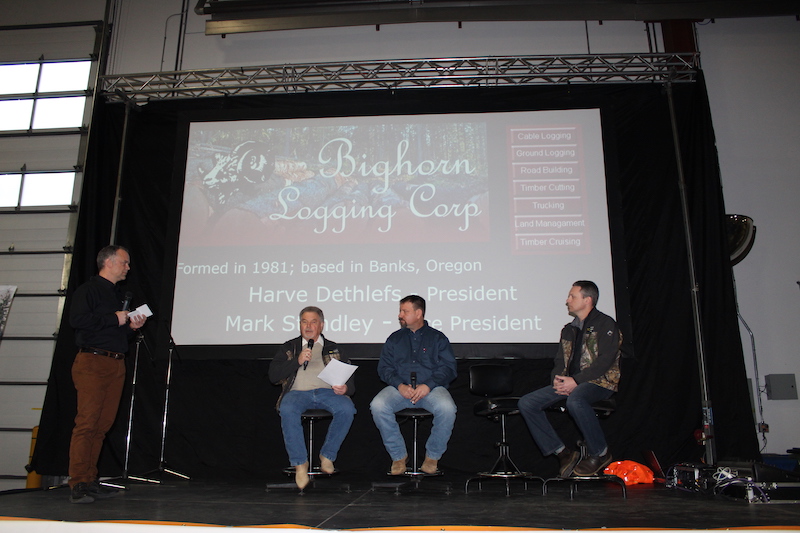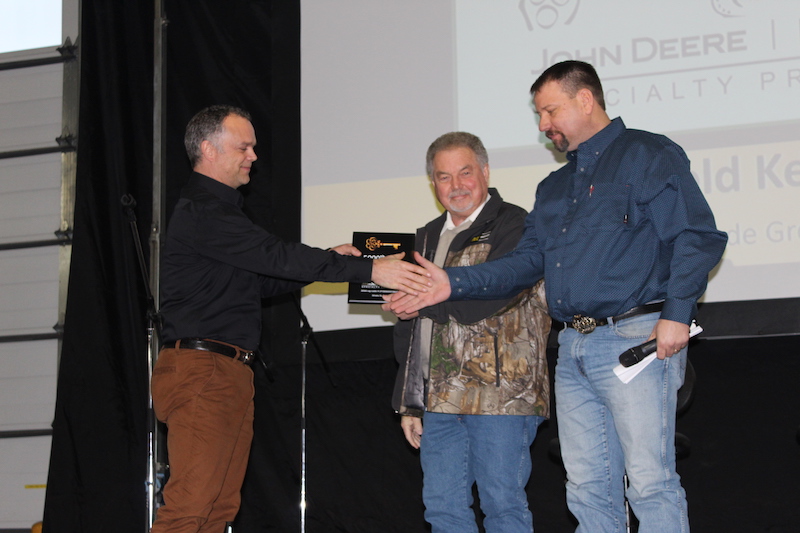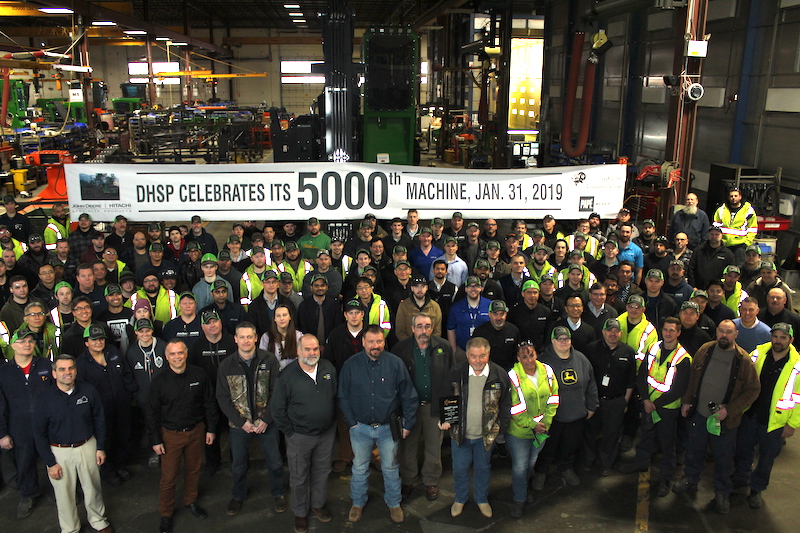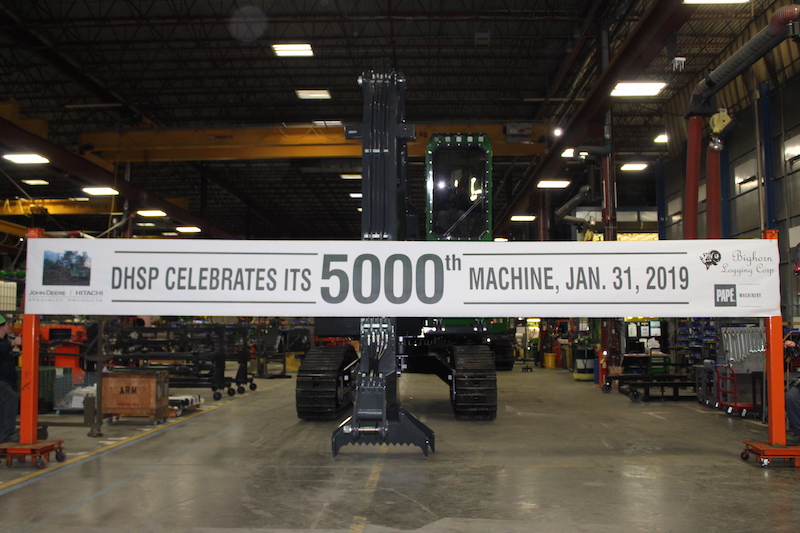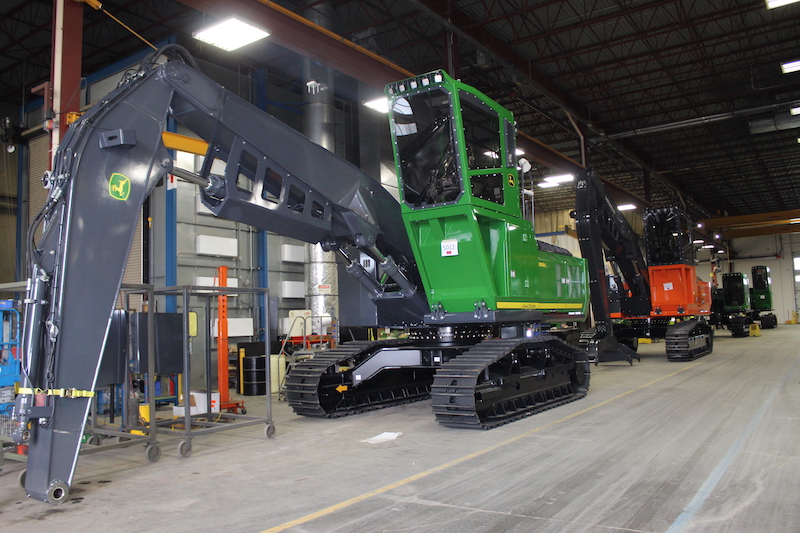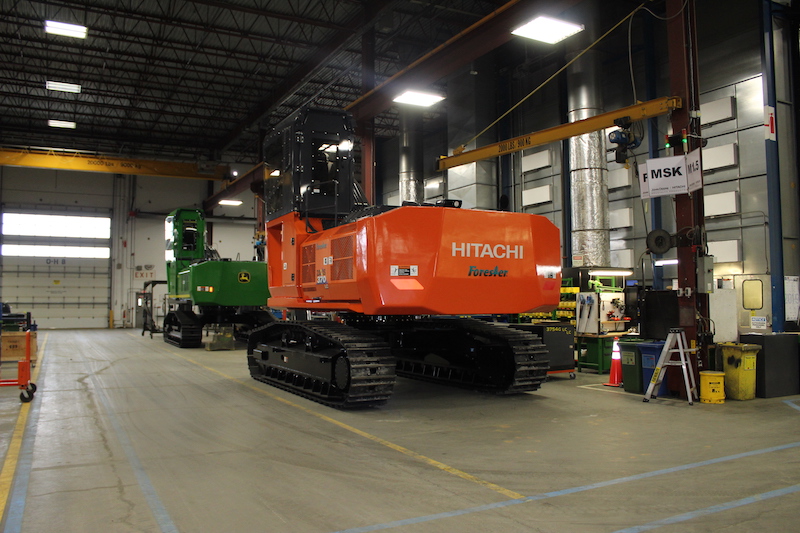
Features
Harvesting
New Gear
John Deere-Hitachi Specialty Products celebrates 5,000th swing machine
February 1, 2019 By Ellen Cools
 DHSP employees, along with representatives from Bighorn Logging Corp. and Papé Machinery Construction and Forestry, celebrate the production of DHSP's 5,000th swing machine. Photo: Annex Business Media
DHSP employees, along with representatives from Bighorn Logging Corp. and Papé Machinery Construction and Forestry, celebrate the production of DHSP's 5,000th swing machine. Photo: Annex Business Media Twenty years ago, the John Deere-Hitachi Specialty Products (DHSP) factory in Langley, B.C., opened its doors and began producing purpose-built forestry swing machines.
On Jan. 31, 2019, the factory celebrated the production of its 5,000th swing machine. To commemorate this landmark, the company presented the new owners of this machine, Bighorn Logging Corp., with a gold key. CFI was there to celebrate with DHSP and join Bighorn Logging on a tour of the factory.
Quality and reliability
Based in Banks, Ore., Bighorn Logging has been using John Deere forestry machines since 2012.
In a Q&A in front of the factory’s 120 employees, Bighorn’s president Harve Dethlefs and vice-president Mark Standley shared their thoughts on the state of the industry and how important quality machinery is to their operations.
“John Deere has been a big part of our success,” Dethlefs said. “In 2012, up until that point, we were experimenting with almost all of the excavators and log loaders and processors that were on the market. But then we switched over to the John Deere side, and it’s been great for us.”
Bighorn has 27 machines in its fleet, 16 of which are John Deere. Machine quality is a key factor in choosing their equipment.
“If they’re not running, downtime kills us,” Dethlefs explained. “We’re production oriented; if the machine doesn’t function on any given day, we’ve lost a day of production. The demand from the mills that we contract to, they’ve got levels of production that they expect. And for us to meet those production levels, we need a good reliable machine.”
And John Deere, Dethlefs said, provides that reliability.
Staying up-to-date with machinery doesn’t just help with production. For Bighorn, it’s one of the ways they’re tackling the industry-wide problem of attracting new employees.
“It’s hard to get new people into our industry, younger people into our industry, but a lot of these guys are interested in some of the new technology,” Standley explained.
For Standley, one of the coolest features with John Deere machinery is JDLink, which allows him to monitor fuel consumption, track idling time and hours worked. This, in turn, helps the company save money.
“It’s something that a lot of people do not realize, when you look at the dollars per gallon on diesel, what goes out of the exhaust when no production is being done,” he elaborated. “There’s a lot of money in that little bit of technology that you can show people. It’s amazing what numbers do to people when you show them what it costs and how it affects the bottom line.”
DHSP’s newer forestry machines have also put a new focus on operator comfort.
At Bighorn, “the operators like the cab, the comfort of it, the visibility,” Standley shared. “We’ve got 80 employees and very rarely do I hear complaints about operating the machine and the comfort of it.”
A big milestone
For DHSP, quality and design are some of their core values.
When John Deere and Hitachi Construction Machinery first formed a joint venture in 1998, they recognized that converting excavators was not the best way to perform logging operations, explained Mark Wilkinson, program manager and product specialist at DHSP.
“At that time, it made a dramatic improvement in terms of the quality the customer was getting and the productivity the customer was getting,” Wilkinson told CFI. “As time has gone on, over the past 20 years of our business, through a lot of input from customers, we’ve evolved the product into a very specific, purpose-built machine for the applications they’re in.”
In particular, the swing machines have evolved in a number of ways, including improvements in vehicle control, horse power, swing torque and fuel economy, said Wilkinson.
The production of their 5,000th swing machine is an exciting moment for DHSP, particularly because it’s produced in B.C.
“The heart of the forestry swing machine is in the Pacific Northwest of the United States and western Canada,” Wilkinson explained. “So, it’s pretty exciting to have been here for 20 years in the B.C. economy, supporting both Canada and the Pacific Northwest, and to build 5,000 machines is a pretty big milestone in this industry.”
Looking forward to the next 5,000 swing machines, DHSP will “continue to build highly productive, high quality and safe to operate machines that provide value to our customer.”
Print this page
